Doubling numbers
Counting and adding
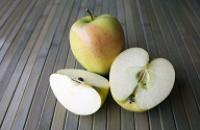

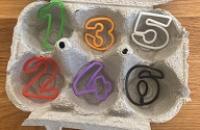
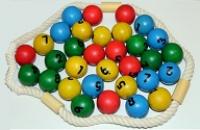
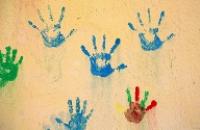
Children often enjoy matching amounts and spotting things which are the same.
Adults could provide patterns of numbers which are doubles, e.g. on dice, dominoes, egg boxes etc.
The Activity
Tell a story of someone having trouble looking after two dogs who will not do what they are told. Then they get given two more dogs to look after - now they have four and they have 'double trouble'! What about if they have three dogs - how many would be double trouble? Ask the children to model doubling numbers up to five on their fingers and to select images to match the story numbers, e.g. dominoes and dot patterns.
Encouraging mathematical thinking and reasoning:
Describing
What do you notice about the numbers and their patterns?
What happens if you match the doubles numbers to a number line?
Reasoning
What do you have to do when you double? How do you know a number is a double?
Opening Out
Encourage children to make 'double' numbers in two column arrays, with objects, counters and pegboards.
Identify the double numbers with dice, dominoes, egg boxes, multilink etc.
Make up other patterns with double numbers.
Compare patterns for the same number e.g. double 5 domino and 10 as an array.
Recording
Photograph, stick, stamp or draw patterns for 'doubles'. Match doubles patterns to a number line.
The Mathematical Journey
Same and different:
- describing 'doubles' patterns e.g. "There are five here and five here"
- discussing what is the same and different about domino and array patterns
Counting and cardinality:
- counting to check the same number has been added when doubling
Matching numerals and amounts:
- matching numerals to patterns, or patterns to a number line
Adding:
- adding on the same number again to double
- 'counting all' to find the total
- 'counting on' from the first number to find the total
- predicting how many there will be before doubling a number
Multiplying:
- talking about six being 'two threes' rather than 'three and three'
- talking about 'doubling three' to get six
Development and Variation
Doubling and halving: invite children to double and halve numbers, using objects arranged in two-column arrays e.g. with pegboards and multilink. What happens when you halve a number?
You could use other story contexts: a sheepdog with troublesome sheep, or a cat looking after kittens or...
Older children can play a game in pairs with dice: one gets the number of objects, the other doubles it. They can check by matching and counting. Repeat with a range of apparatus.
Resources
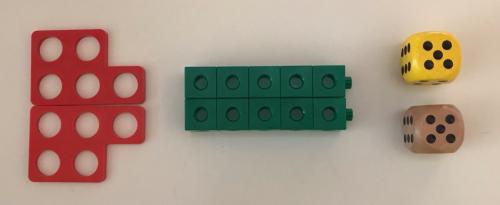
- Toy animals for the 'double trouble' story.
- 'Doubles' images: dice, dominoes, Numicon, multilink in two-column arrays, egg boxes.
- Counters and pegboards to make up doubles patterns.
- Stamps or sticky circles to record patterns.
- Large number lines to attach patterns to.
Download a PDF of this resource.

